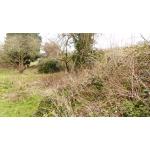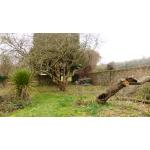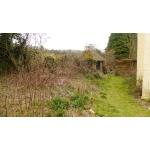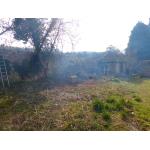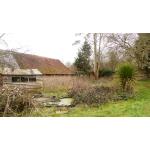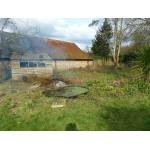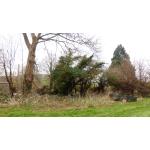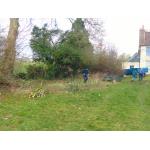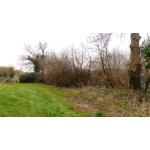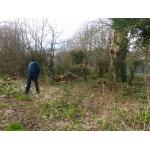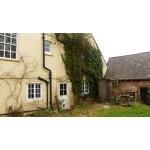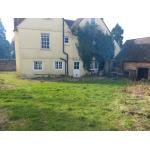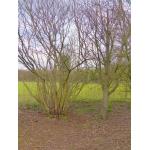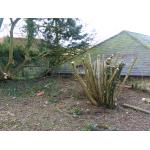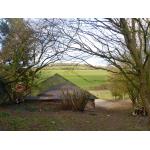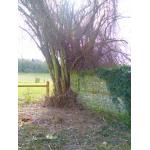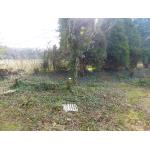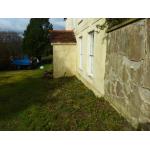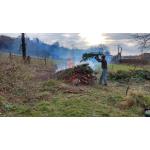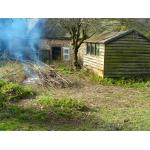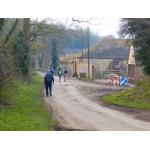Photos are a great way to share and remember cycling experiences, and we use them heavily on the website, the club magazine, and at club evenings. While you can include the odd few photos in website articles, our website isn't really set up to store hundreds and hundreds, but don't despair.
Sharing photos on the web is getting easier and easier and can even be free. In fact, we recommend uploading your precious photos and other files up to the web as a backup for when (not if) your phone or computer eventually dies! Once they're uploaded, you can very easily share a link to them in a post, or by email - e.g. for use in the magazine, or club meetings.
It's not difficult these days. The easiest and free way to get started is to register for a free account with one or more of the websites below, if you haven't already. Here are some we've tried and can recommend:
- Dropbox. Great one minute intro here. Brilliant if your main interest is occasionally sharing photos with others, and backing up your photos (and all your other files as well). It gives you a folder on your computer that automatically syncs to Dropbox's website, and to any other computers, phones or tablets you have. It's free for the first 2 GB, which is enough to store several hundred photos. Highly recommended - the original and still the best - everyone should have a Dropbox!
- Google Drive. Good intro here. Similar to and almost as good as Dropbox, but 15 GB free storage, and especially good if you already have a google account. Google also offers to back up all your photos automatically, totally for free if you don't mind slightly less than maximum resolution.
- Google Photos - very new and trendy, but not recommended yet unless you're very comfortable with smartphones and computers.
- Flickr.com. Good intro here. Great for organising and sharing your photos, and fairly simple to use. It's the world's most popular photo sharing website, owned by Yahoo, and offers up to 1TB for free - that's 1024 GB - it's HUGE.
Once your your photos are uploaded, click the 'sharing' option to get a link (a web URL) to them. Usually, you'll be sharing more than one photo, so best to first group them into a folder or album and share that in one go. Simplest is to make them public, but it's pretty secure, as the link is usually so complex that no-one else could guess it, but if you're paranoid about security, and don't mind a bit of extra work, you can share them so they're only visible to specific named individuals.
As an example, I just created an album on Flickr of my CTC ride to Wiggonholt - you can follow the link here.
Do give photo sharing a try!
Alternatively if you just want to send one or more photos to someone without filling their email inbox, there are several free services that allow you to send your photos via a web site. Your recipient gets an email to let them know your files are available together with a link allowing them to download them when they're ready.
There are a lot of sites offering this service for free and without asking you to create an account first. You just provide the destination email address(es), your email address and the files you want to send. The web site does the rest. Beware, however. These sites have to earn their money somehow. Some ask you to give permission for them to send you and your recipient 'promotional material' which could be irritating at best and offensive at worst - so read the T&Cs carefully. This site...
... gets its revenue by displaying adverts as background images while you use the site, It seems to be benign. You can even upload files without providing your recipient's email address (they might not take too kindly to you giving their email address to a third party). You get a link you can email to your recipient privately. To use the free service go to the web site and click the '?' icon at the bottom right of the left-hand pane for more information.

 We are very lucky to have the South Downs National Park on our doorstep. It's a great place to cycle with fantastic views and the scenery seems to change mile-by-mile and week-by-week.
We are very lucky to have the South Downs National Park on our doorstep. It's a great place to cycle with fantastic views and the scenery seems to change mile-by-mile and week-by-week. Of course, you need a certain level of strength and fitness to do hills. But you don't need to be super-human. Anyone with average strength and fitness can manage most of the hills we do.
Of course, you need a certain level of strength and fitness to do hills. But you don't need to be super-human. Anyone with average strength and fitness can manage most of the hills we do. You might have experienced the foreshortening effect already. As you approach a hill it looks impossibly steep. When you get there, it seems to magically level out into an easy climb. Where did it go?
You might have experienced the foreshortening effect already. As you approach a hill it looks impossibly steep. When you get there, it seems to magically level out into an easy climb. Where did it go? Some people can manage to get up hills on a single gear, but that's not normal!
Some people can manage to get up hills on a single gear, but that's not normal! This technique involves straightening your legs so you're standing on the pedals and then transferring your weight on to the highest pedal forcing it down then switching your weight to the other pedal; then repeat.
This technique involves straightening your legs so you're standing on the pedals and then transferring your weight on to the highest pedal forcing it down then switching your weight to the other pedal; then repeat. For your muscles to work they need fuel, and oxygen to burn it. Your body needs water to function.
For your muscles to work they need fuel, and oxygen to burn it. Your body needs water to function. Toe clips attach to the front of your pedal and surround the front part of your foot. They give you some scope to pull a pedal up as well as push it down. They also allow you to put more oomph into the pedal as it moves forwards. When you stop, you have to take your foot out of the toe clip by pulling back.
Toe clips attach to the front of your pedal and surround the front part of your foot. They give you some scope to pull a pedal up as well as push it down. They also allow you to put more oomph into the pedal as it moves forwards. When you stop, you have to take your foot out of the toe clip by pulling back.
 Racing or 'three hole' cleats come in colour variants with progressively less float: grey/yellow, red and black. They are more efficient at converting muscle power to forward motion.
Racing or 'three hole' cleats come in colour variants with progressively less float: grey/yellow, red and black. They are more efficient at converting muscle power to forward motion.




